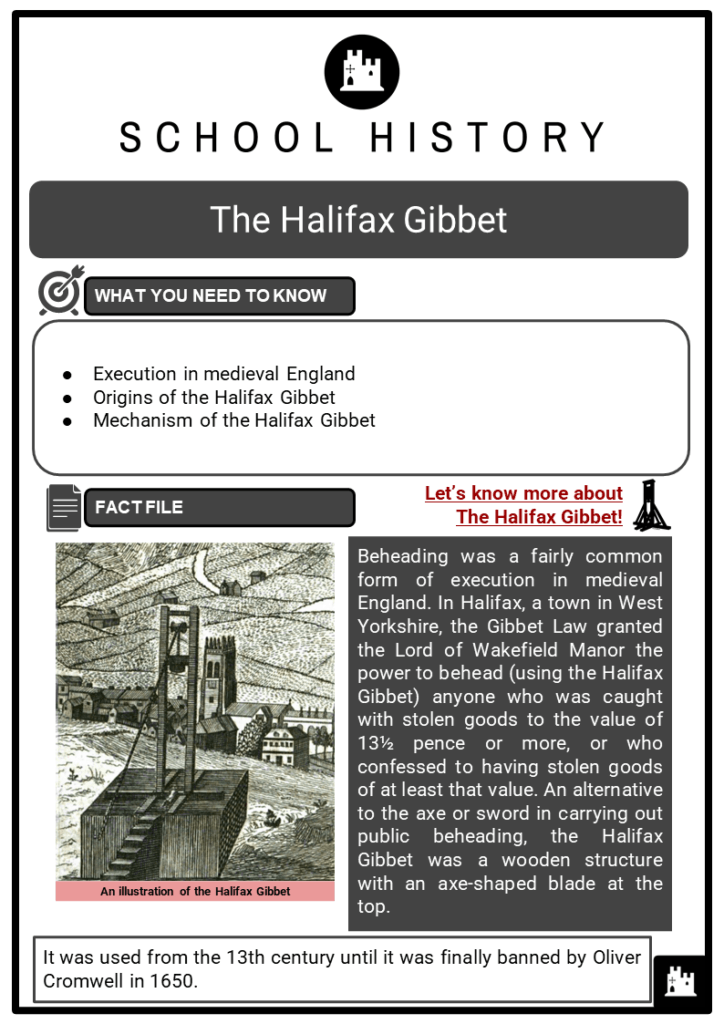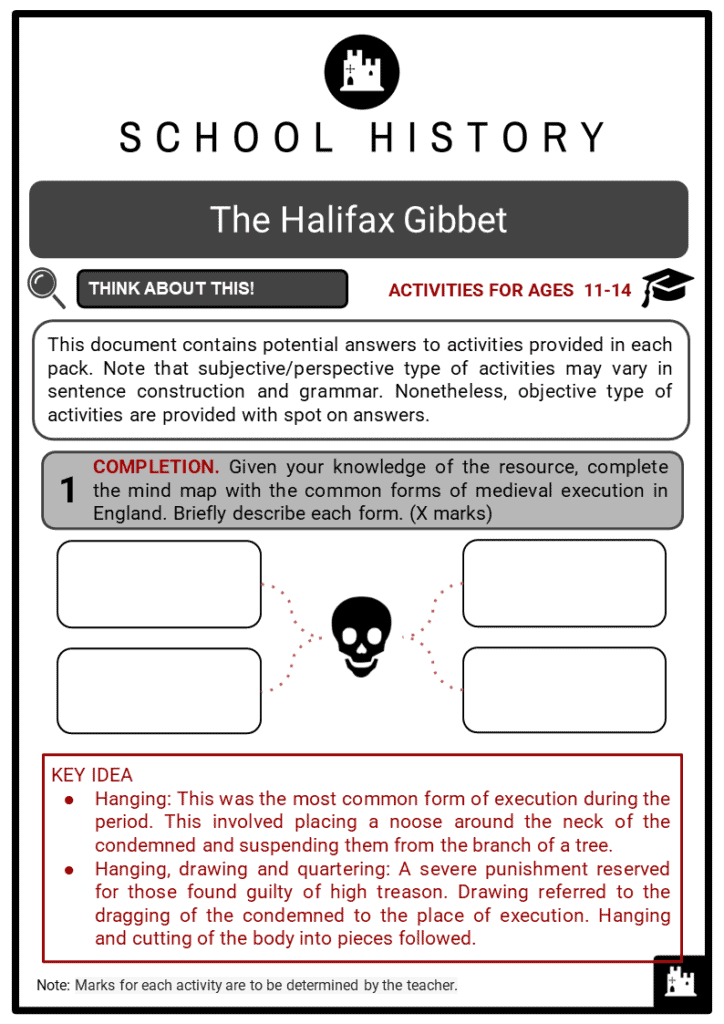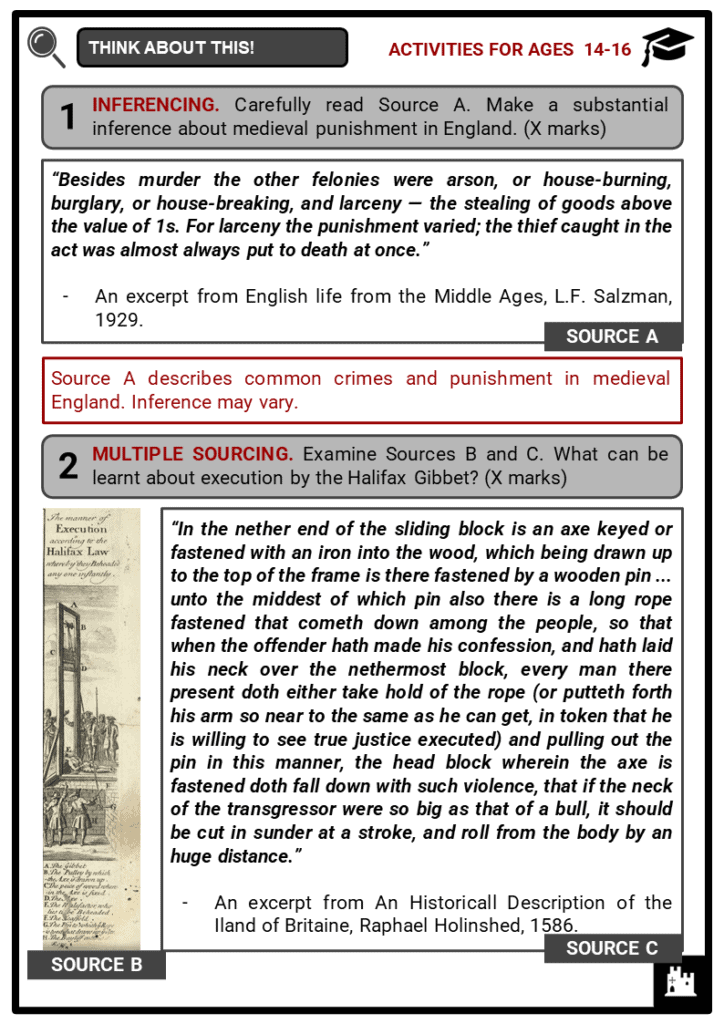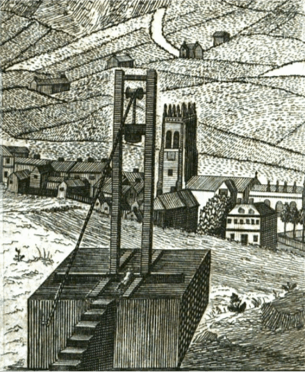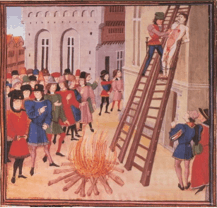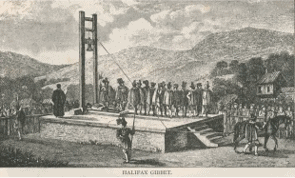Download The Halifax Gibbet Worksheets
Do you want to save dozens of hours in time? Get your evenings and weekends back? Be able to teach The Halifax Gibbet to your students?
Our worksheet bundle includes a fact file and printable worksheets and student activities. Perfect for both the classroom and homeschooling!
Table of Contents
Add a header to begin generating the table of contents
Summary
- Execution in medieval England
- Origins of the Halifax Gibbet
- Mechanism of the Halifax Gibbet
Key Facts And Information
Let’s know more about The Halifax Gibbet!
- Beheading was a fairly common form of execution in medieval England. In Halifax, a town in West Yorkshire, the Gibbet Law granted the Lord of Wakefield Manor the power to behead (using the Halifax Gibbet) anyone who was caught with stolen goods to the value of 13½ pence or more, or who confessed to having stolen goods of at least that value. An alternative to the axe or sword in carrying out public beheading, the Halifax Gibbet was a wooden structure with an axe-shaped blade at the top.
- It was used from the 13th century until it was finally banned by Oliver Cromwell in 1650.
Execution in medieval England
- Public torture and execution was common throughout England during the medieval period. They were regarded as a socially accepted form of punishment. The types of execution varied depending on the severity of the crime.
- Common forms of medieval execution:
- Hanging: This was the most common form of execution during the period. This involved placing a noose around the neck of the condemned and suspending them from the branch of a tree.
- Hanging, drawing and quartering: A severe punishment reserved for those found guilty of high treason. Drawing referred to the dragging of the condemned to the place of execution. Hanging and cutting of the body into pieces followed.
-
- Burning: A punishment commonly given to people accused of heresy or witchcraft. The accused was strapped onto a wooden stake surrounded by branches. The branches were then lit, slowly burning the accused alive.
- Crushing: This punishment involved slowly stacking weight on top of the accused until the person was suffocated. It was initially intended to coerce confessions but often led to the death of the accused.
- Beheading: This form of execution was considered the least brutal for it allowed instantaneous death. It was often reserved for nobles, knights and even royalty.
- Despite the gruesome nature of the executions, they were often public and attended by large, jeering crowds. Public execution was often used to deter others from committing crimes.
Origins of the Halifax Gibbet
- A forerunner of the guillotine, the Halifax Gibbet was a device built to replace the axe or sword as the means of carrying out public beheading. It was first used in Halifax, hence its name, as early as the 13th century.
- During the medieval period, the town of Halifax was once part of the Manor of Wakefield, where the Lord of the Manor held the power to execute (by the Halifax Gibbet) anyone who was caught with stolen goods to the value of 13½ pence or more, or who confessed to having stolen goods of at least that value.
- This law came to be known as the Gibbet Law.
- The Halifax Gibbet was first used in 1286 for the execution of John of Dalton, whose crime was not recorded.
- The Gibbet Law
- If a felon be taken within their liberty or precincts of the said forest [the Forest of Hardwick], either handhabend [caught with the stolen goods in his hand or in the act of stealing], backberand [caught carrying stolen goods on his back], or confessand [having confessed to the crime] cloth or any other commodity to the value of 13½d, that they shall after three market days or meeting days within the town of Halifax after such his apprehension, and being condemned he shall be taken to the gibbet and there have his head cut off from his body.
- The Gibbet Law is believed to have derived from the Anglo-Saxon custom of infangtheof.
- This custom allowed landowners to carry out summary justice on thieves within the boundaries of their estates.
- It was probably the consequence of rights granted by King Henry III to John de Warenne, Lord of the Manor of Wakefield.
- With the law being strictly applied, the punishment could only be dispensed to those within the limits of the Forest of Hardwick, of which Halifax was a part.
- Procedure when a suspected thief was caught:
- Suspected thieves were detained in the custody of the Lord of the Manor's bailiff, and a jury of 16 local men would be summoned by the bailiff.
- The jury had to find out if the stolen goods were in the possession of the accused, and if they were worth at least 13½ pence.
- The jury, the accused, and those claiming that their property had been stolen, would then be brought together in a room at the bailiff's house.
- Each side would present their case, and the jury would decide on guilt or innocence.
- If the accused was acquitted, he would be set free after having paid the court fees. If the accused was condemned, arrangements were made for the execution.
- The convicted felon would then be detained for three market days and publicly displayed in the stocks. The execution would take place at the Saturday market, where many people would witness it.
- After the execution, the death would then be registered in the Records of the Crown.
- It is believed that the Gibbet Law was meant to deter thieves who were stealing lengths of newly made woolen cloth called kersey that had to be hung up outdoors to dry with little security.
- At the time, Halifax and the surrounding Calder Valley were the largest producers of kersey in England.
- The severe punishment of thieves was justified as a means to protect the local economy.
- Between the 13th and the 17th centuries, 52 men and women are reported to have been beheaded using the Halifax Gibbet.
- However, it is thought that the total number of executions since 1286 was nearly 100.
- Anthony Mitchell and John Wilkinson were the last persons executed using the Halifax Gibbet. Practising the Gibbet Law ended in 1650 when the Protector of the Commonwealth of England, Oliver Cromwell, banned it due to public opinion.
Mechanism of the Halifax Gibbet
- The first account of the Halifax Gibbet was found in the Harleian Manuscripts written in the 16th century. The Halifax Gibbet appears to have been unique in England.
- It was a wooden structure with an axe-shaped blade at the top.
- It consisted of wooden pillars connected to the top of two 15-foot (4.6 m) columns.
- Moreover, there was a square board of 4-6 feet (1.37 m), with an axe weighing 7 pounds 12 ounces (3.5 kg) at the bottom.
- The entire structure was 9 feet wide (2.7 m) and 4 feet tall (1.2 m).
- It was also characterised by a rope attached to a wooden peg which was in turn attached to a long rope.
- During an execution, the rope was cut or loosened.
- The blade of the Halifax Gibbet was never sharpened.
- In theory, the only reason why it worked as a tool to behead was that the weight of the blade and the speed at which it fell would crush the neck of the condemned, causing the head to be ripped off.
- After the Halifax Gibbet was forbidden in 1650, it was subsequently dismantled. In 1974, a non-working replica of the execution device was made. The full-size copy includes a blade made from a casting of the original. As of 2011, the replica is displayed in the Bankfield Museum in Boothtown on the outskirts of Halifax. On a memorial plaque in Halifax are engraved the names of the 52 people who were executed by the device.
Image sources:
- https://i2.wp.com/strangeago.com/wp-content/uploads/2019/12/HalifaxGibbet.png?w=439&ssl=1
- https://alchetron.com/cdn/hugh-despenser-the-younger-dfd3b353-b2ff-4413-a40f-30ef77f4b97-resize-750.jpeg
- https://i.guim.co.uk/img/media/95e362653095e4961e1b351b54fe2ce77f5e5c30/90_261_4050_2430/master/4050.jpg?width=620&quality=85&auto=format&fit=max&s=cf46945110ee887bc91256938793b5ab

